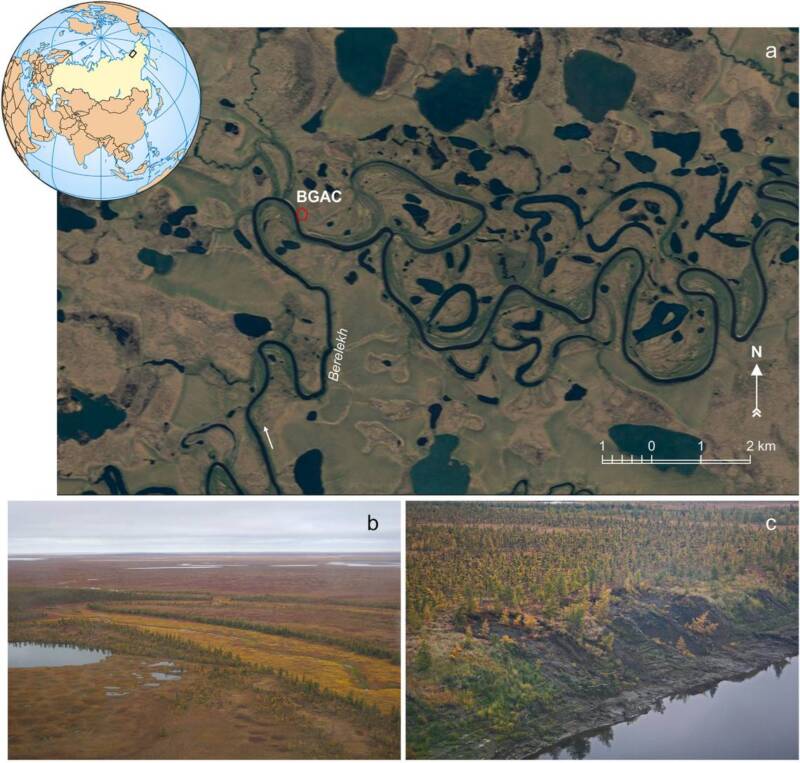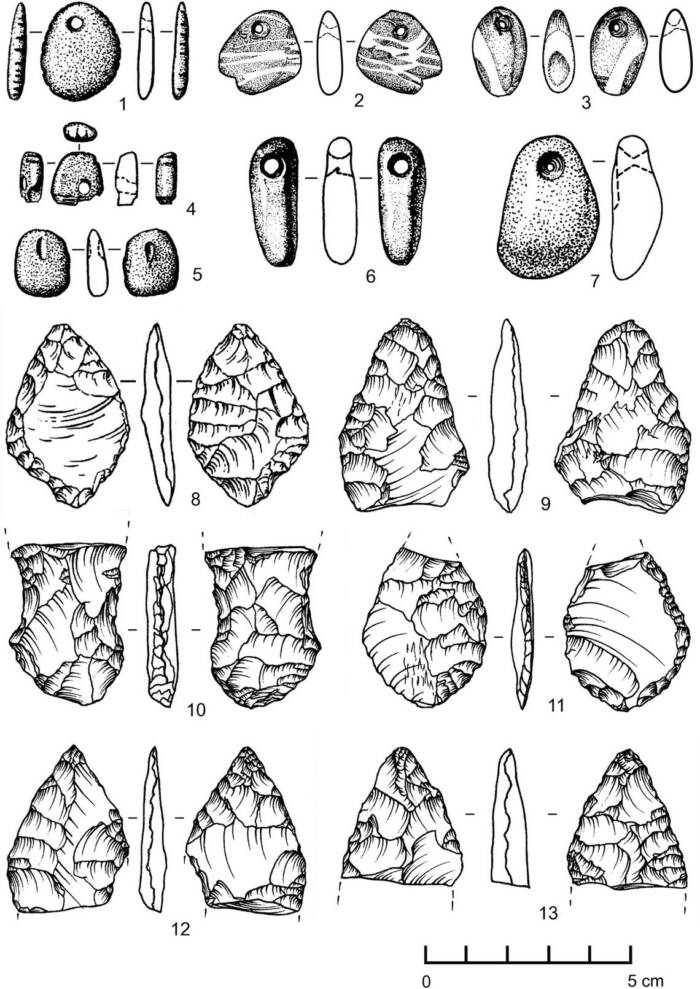Mammoth bones discovered at a site in eastern Siberia nearly 100 years ago were believed to be a natural accumulation, possibly resulting from a mass extinction event. New research suggests the bones were instead deposited by humans over the course of 800 years.

Pitulko et al (2024) Quaternary Science ReviewsThe Berelekh geoarchaeological complex in Siberia.
When explorers stumbled across a site containing thousands of bones in eastern Siberia in the 1940s, they initially weren’t quite sure what they had found. Later research identified the remains as having belonged to perhaps hundreds of woolly mammoths, all mixed together.
Now, a new study suggests this “mammoth graveyard” actually functioned as a sort of “factory” for ivory and bone tool production. Researchers hope this discovery will help them to better understand the relationship between prehistoric humans and mammoths.
What This “Mammoth Graveyard” Is Revealing About The Relationship Between Humans And Woolly Mammoths
The new study was published in the journal Quaternary Science Reviews by a team from the Russian Academy of Sciences.
Examining the prehistoric “graveyard” along the Berelekh River, the team found evidence of a massive mammoth population, as well as signs of how humans interacted with the mammoth remains.
And not just mammoth remains. Mixed in among them were the bones of Pleistocene hares, Arctic foxes, and wolves. They also uncovered soot and charcoal from hearths and — most notably — worked mammoth tusks.
The mammoth graveyard was not too far from a prehistoric human settlement, where excavations uncovered several artifacts made from mammoth bone fragments, including tools and an engraving of a mammoth.
Previously, studies claimed that the mammoth graveyard was a natural accumulation that predated any human settlement in the region, and that humans had simply scavenged the bones and repurposed them. However, researchers now posit that the two species could have overlapped by as many as 800 years.
Significantly, evidence of humans at the prehistoric settlement was found in the same soil layer as the mammoth bones, indicating the two stemmed from the same time period of about 13,700 to 11,800 years ago.
The bone and ivory artifacts were also radiocarbon-dated to the “same range as the dates from the archaeological site,” suggesting that “people at the site were generally making bone and ivory artifacts” from animals living at the same time as them.
In the study, researchers suggest that humans deposited mammoth bones in the “graveyard” as a byproduct of ivory craftwork. The hares and foxes, meanwhile, were likely hunted for their furs to produce warm clothing during the last ice age.

Pitulko et al (2024) Quaternary Science ReviewsHuman artifacts found at a settlement nearby.
Some bones also showed signs of blowfly pupae activity, meaning they had been deposited to the “graveyard” de-fleshed, rather than simply dumped there with their flesh and meat still attached. There was likewise evidence that the bones had been sorted, with humans leaving behind the less desirable pieces like spinal columns and carpal and tarsal bones at the kill site.
“The Berelekh ‘mammoth graveyard’ can no longer be considered a natural accumulation in the form of a fluvially-derived concentration, mass death event, or a series of mass death events in the same location,” researchers wrote. “Instead, it should be considered an example of a humanly created mass accumulation of mammoth remains, now widely known in East Siberia.”
Insights Into The Mass Extinction Of Woolly Mammoths
During the course of the study, researchers found that the population of humans in the area likely fluctuated over the years, meaning they occupied the region frequently but not permanently. This coincided with a fluctuation in the abundance of mammoths in the “graveyard,” and can likely be attributed to environmental changes on the floodplain.
Interestingly, radiocarbon dating also shows that while mammoths in the region pre-dated humans, humans remained in the region even after mass declines in the mammoth population.
Based on these findings, researchers put forth several theories as to what could have created such a large accumulation of mammoth bones.
The first and most simple explanation is mass death, either by natural causes or humans. The second is that the mammoths died in groups repeatedly in the same area, in part because of human predation. The third is that the bones accumulated in the same spot because of some geological process, such as a river carrying them downstream. And the fourth is that these bones accumulated solely because of human predation and scavenging.

Pitulko et al (2024) Quaternary Science ReviewsAltered mammoth bones recovered from the site.
Of these theories, the researchers determined the fourth to be most likely, as it would have yielded the most benefits for humans: ivory to make tools, meat to feed the community, etc.
Furthermore, there was nothing on the bones that would point to evidence of a mass death, and radiocarbon dating didn’t indicate any “phases” of recurrent death deposits. And stream flows likely would have been too weak to carry such heavy bones.
In short, there was probably no mass death of mammoths at the site, but rather, a regular deposit of animal bones over the course of 700 to 800 years as humans used the remains for a variety of purposes.
After learning about this mammoth graveyard in Siberia, read about some of Earth’s other prehistoric animals. Or, read about the megatherium, the 13-foot sloth that ruled the prehistoric Amazon.





